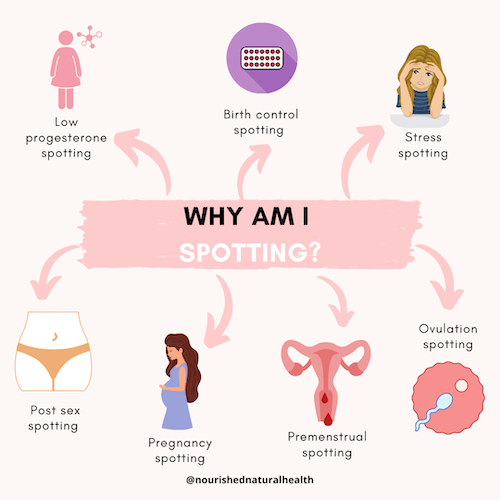
On Birth Control And Spotting. Here are some contraceptives that may lead to breakthrough bleeding. You may experience some spotting light bleeding while you are on contraceptives such as birth control pills implants rings and injections. This may lead to spotting. Essentially the pill creates an artificial cycle mimicking pregnancy for three weeks to prevent ovulation and then allowing one week of breakthrough bleeding that resembles a normal period.
Here are some contraceptives that may lead to breakthrough bleeding. During the first six months of using a new birth control product spotting is quite common as your body still needs to adapt to changing hormone levels. Consistently taking birth control pills at the same time each day reduces the incidence of spotting. While birth control pills can reduce heavy vaginal bleeding they dont always change the size of fibroids and may even increase them leading to occasional spotting and light bleeding. Essentially the pill creates an artificial cycle mimicking pregnancy for three weeks to prevent ovulation and then allowing one week of breakthrough bleeding that resembles a normal period. In fact spotting on birth control is quite common.
This drops to 10 to 30 by the third month.
Birth control pill are drugs that contain synthetic hormones that help prevent pregnancy. Irregular bleeding or spotting on birth control is pretty normal and is almost never dangerous or a sign of an underlying issue. Essentially the pill creates an artificial cycle mimicking pregnancy for three weeks to prevent ovulation and then allowing one week of breakthrough bleeding that resembles a normal period. Skipping or being late on a pill can also cause spotting. Between 30 to 50 of people using combination birth control pills experience breakthrough bleeding and spotting in the first three to six months of use. While birth control pills can reduce heavy vaginal bleeding they dont always change the size of fibroids and may even increase them leading to occasional spotting and light bleeding.
